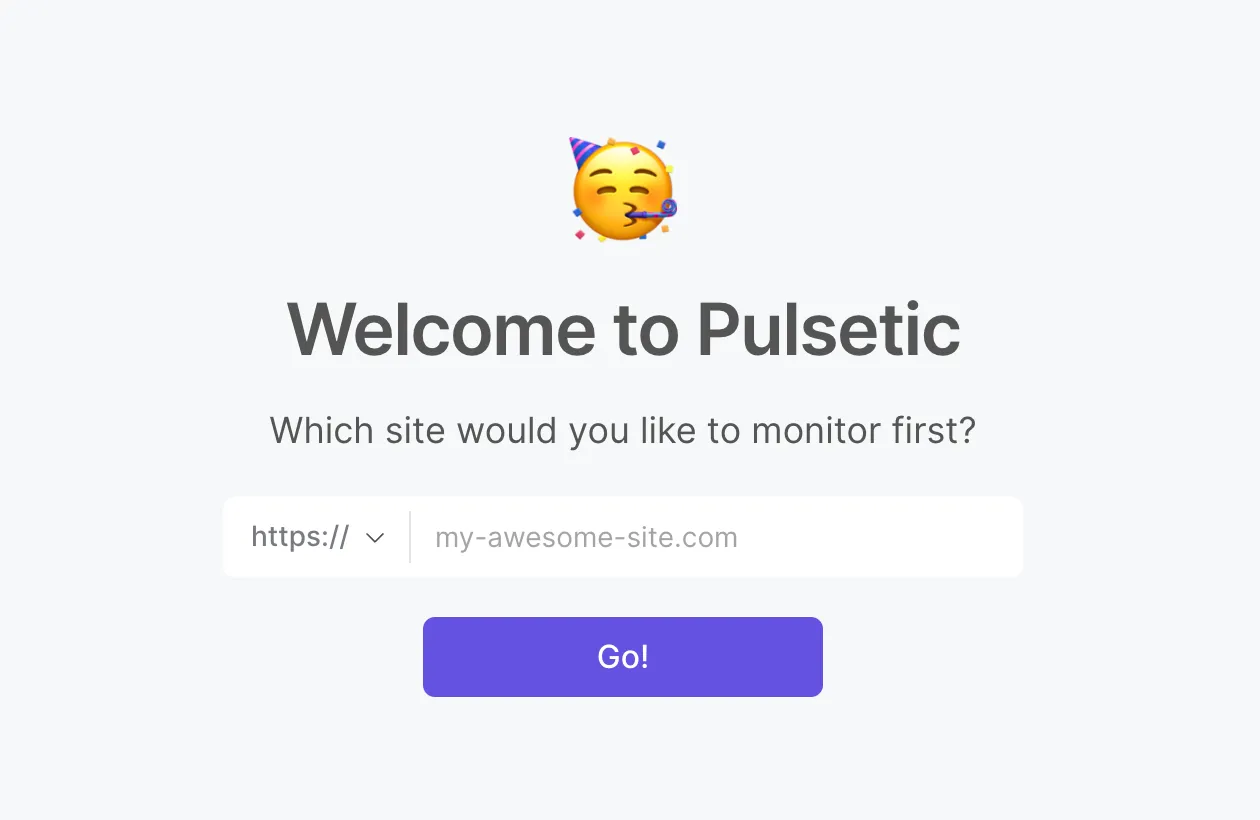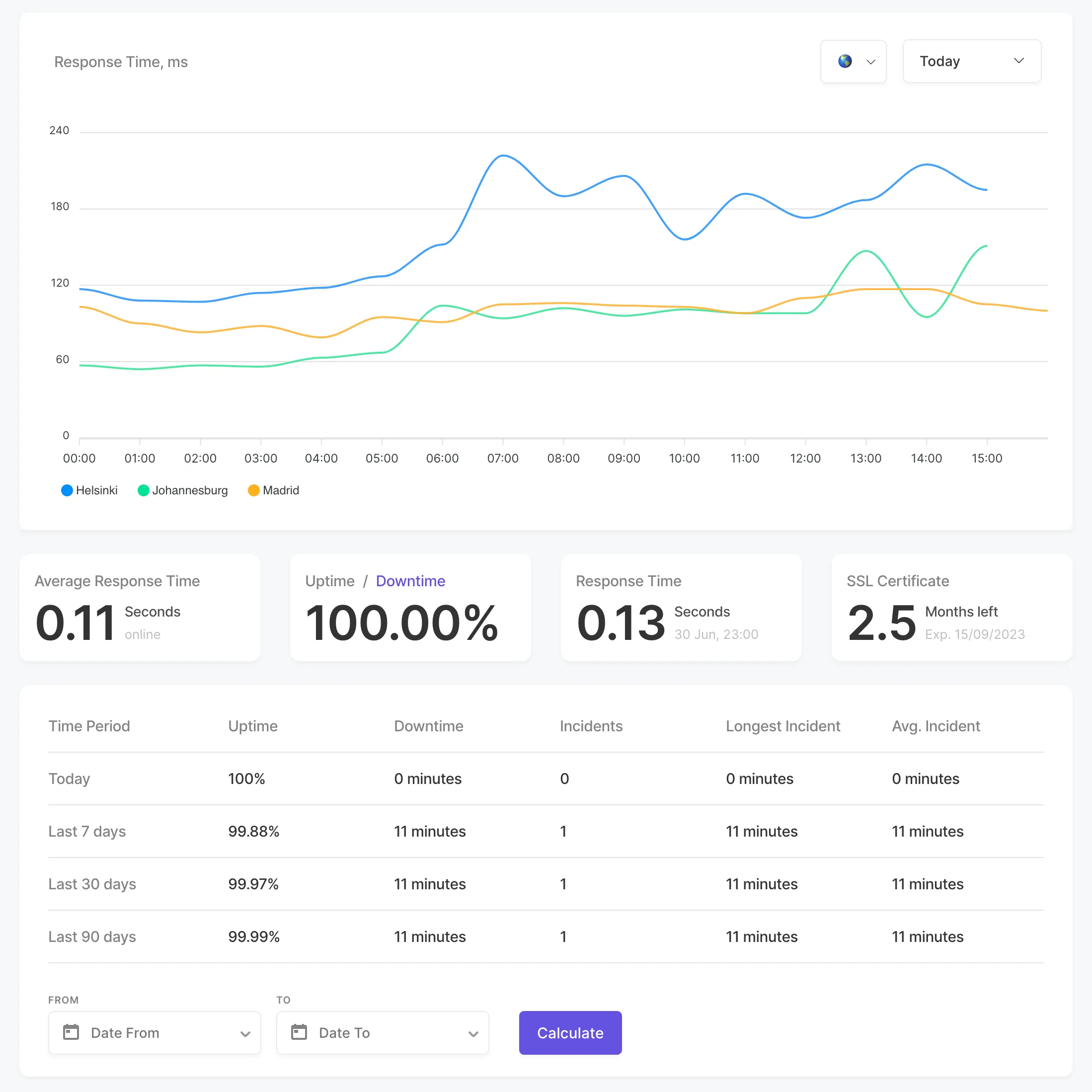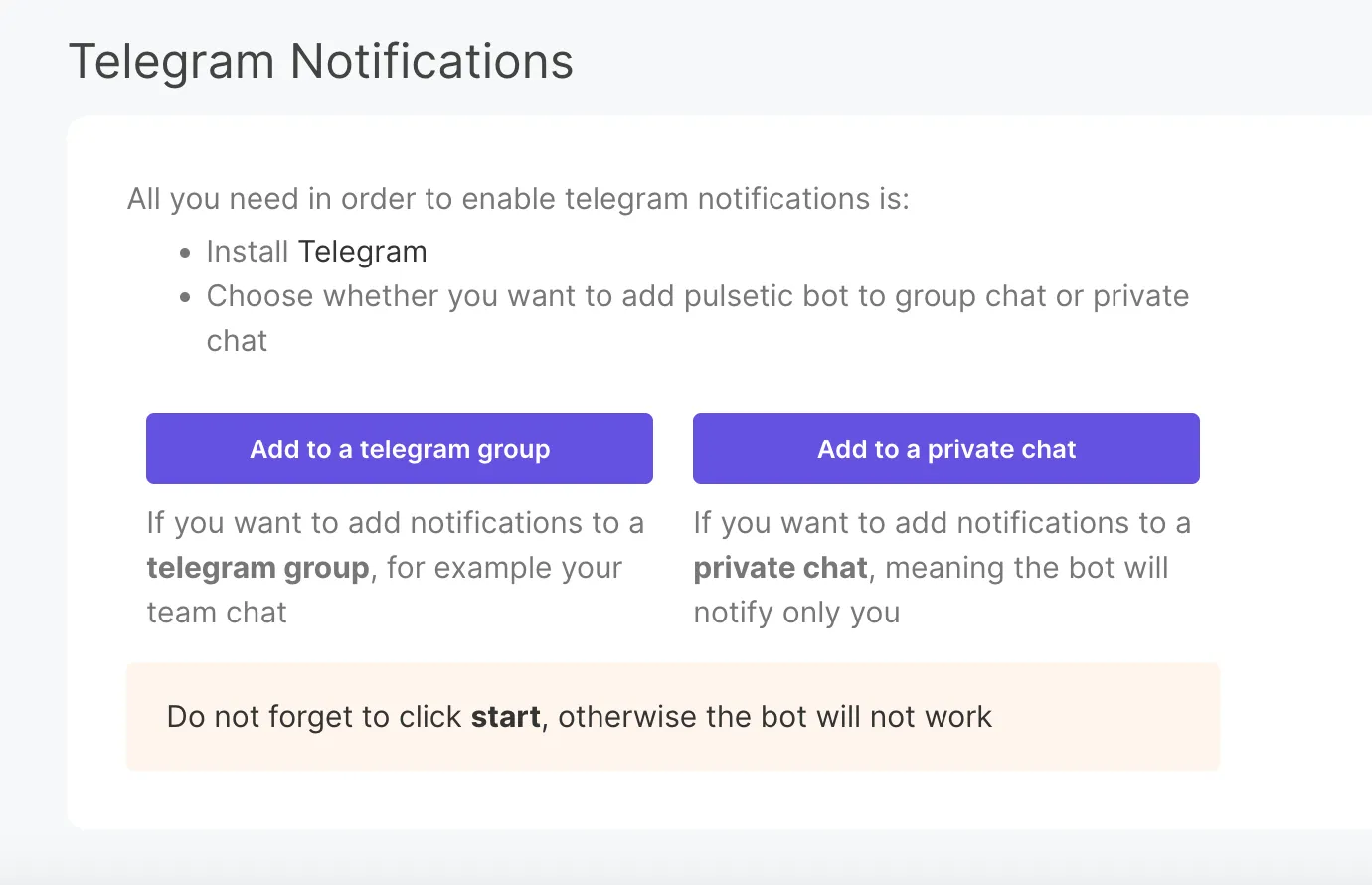Uptime and SSL monitoring for this website
This website can goes offline anytime because of many factors. Third party services outage, ssl certificate expiration, or sometimes because of wrong configuration from my side. I want to be the first person to notice when the website goes down. I need a service monitoring tool that monitors this website periodically.
I don’t plan to buy any paid service. So, ideally the monitoring service I want to use will have these features in their free plan:
- Website uptime and ssl certificate monitoring
- Basic alert through email
- Status monitoring page for public use
- Status monitoring badge
- Custom domain for status monitoring page
- Multiple region checks
After I looked for some services, I found that Pulsetic had most of the features I needed in their free plan, except the status monitoring badge which actually only existed in their paid plan. So, I decided to use Pulsetic for my monitoring service.
Getting started
I need to register a Pulsetic account. You can access through this link. After that, I need to add and register the address of this website to the monitor list. That’s it, the website is successfully monitored with these simple steps.

Uptime and ssl monitoring
After the website address is added to the monitoring list, Pulsetic will monitor the uptime and ssl certificate status for the website. With free plan, this website will be monitored with 5 minutes interval. I tried to make the website down for several minutes to check if the monitoring actually worked properly.

I can see detailed monitoring data through overview page section. This website is monitored from 3 regions periodically and the result is displayed as aggregate data.

Basic alert
There are many available options for alert and notification in case of something wrong. However, in this post, I will cover the basic alert for my personal usage which is through email and telegram.
Basic alert through email
Basic monitoring alert through the email account is configured automatically when the website address is added to the monitoring list. I can however change or add up to 5 email addresses if I want to notify other addresses.

Basic alert through telegram
Besides email, I also configure monitoring alert through telegram. With telegram, you can choose whether you want the telegram bot to send the alert through your telegram group or your private chat.

Status monitoring page for public use
The status monitoring page can be used by the visitors and me to see this website’s uptime status. To create a status page with Pulsetic, head over to the status page creation page or you can access it from this link. We only need to fill some basic data and select which monitored website will be displayed on the status page.
After the status page is created, there will be a public link for the status page. I can share the public link with everyone. If I visit my status page, the UI will be like this.

Custom domain for status monitoring page
I want people to access this website status page with my own domain. The status page should be able to be accessed through uptime.faiqnaufal.com address. If you want to follow along, you need to have your own domain to be able to use a custom domain for status page.
Add the address to the Pulsetic
In the status page general settings, there is a custom domain name field. We need to input the domain address on this field. After the update is saved, we’re done configuring the Pulsetic part.

Add the address to the Cloudflare DNS management
The next part is configuring the CNAME DNS record for the domain. My DNS record is managed through Cloudflare DNS management. You may use different DNS management and that is still fine.
In Cloudflare, DNS records menu can be found after selected one of the registered domain. We need to add uptime.faiqnaufal.com as a new DNS record. Things we need to pay attention when creating a new custom domain DNS record for Pulsetic status page are:
- The DNS record type must be CNAME
- The name will be uptime which is the subdomain for faiqnaufal.com and custom domain for the Pulsetic status page. You can change this as you like.
- The target must point to app.pulsetic.com
- Traffic proxy should be enabled. This is Cloudflare specific and may differs in other services.

After the custom domain DNS record is configured. We can check if the configuration works properly by visiting the uptime.faiqnaufal.com custom domain. If everything goes well, the custom domain should be able to display the status page monitoring from Pulsetic.